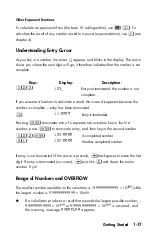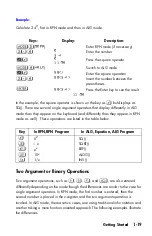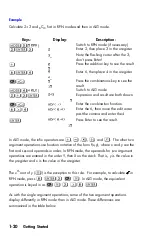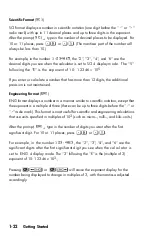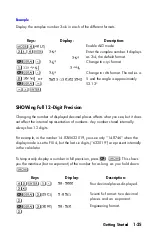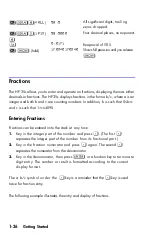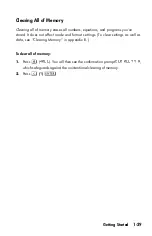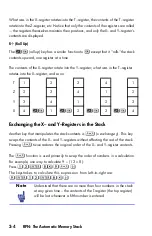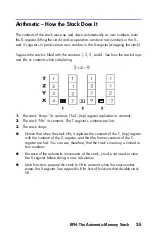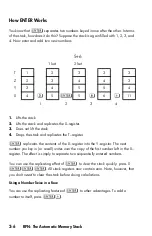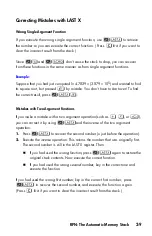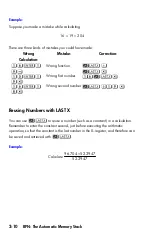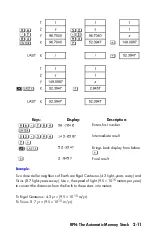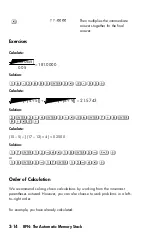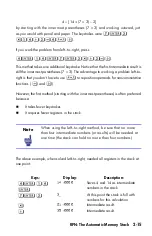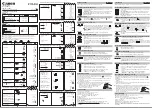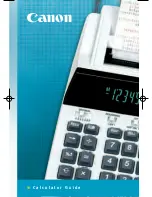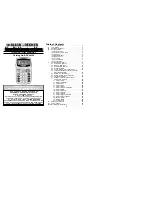
RPN: The Automatic Memory Stack
2-1
2
RPN: The Automatic
Memory Stack
This chapter explains how calculations take place in the automatic memory stack in
RPN mode.
You do not need to read and understand this material to use the
calculator
, but understanding the material will greatly enhance your use of the
calculator, especially when programming.
In part 2, "Programming", you will learn how the stack can help you to manipulate
and organize data for programs.
What the Stack Is
Automatic storage of intermediate results
is the reason that the HP 35s easily
processes complex calculations, and does so without parentheses. The key to
automatic storage is the
automatic, RPN memory stack
.
HP's operating logic is based on an unambiguous,
parentheses–free
mathematical
logic known as "Polish Notation," developed by the Polish logician Jan
Ł
ukasiewicz
(1878–1956).
While conventional algebraic notation places the operators
between
the relevant
numbers or variables,
Ł
ukasiewicz's notation places them
before
the numbers or
variables. For optimal efficiency of the stack, we have modified that notation to
specify the operators
after
the numbers. Hence the term
Reverse Polish Notation
, or
RPN.
The stack consists of four storage locations, called
registers
, which are "stacked" on
top of each other. These registers — labeled X, Y, Z, and T — store and manipulate
four current numbers. The "oldest" number is stored in the T– (
top
) register. The stack
is the work area for calculations.
Summary of Contents for 35s
Page 1: ...HP 35s scientific calculator user s guide H Edition 1 HP part number F2215AA 90001 ...
Page 14: ...12 Contents ...
Page 15: ...Part 1 Basic Operation ...
Page 16: ......
Page 46: ...1 30 Getting Started ...
Page 63: ...RPN The Automatic Memory Stack 2 17 A Solution ...
Page 64: ...2 18 RPN The Automatic Memory Stack ...
Page 74: ...3 10 Storing Data into Variables ...
Page 180: ...12 14 Statistical Operations ...
Page 181: ...Part 2 Programming ...
Page 182: ......
Page 246: ...15 12 Solving and Integrating Programs ...
Page 270: ...16 24 Statistics Programs ...
Page 284: ...17 14 Miscellaneous Programs and Equations ...
Page 285: ...Part 3 Appendixes and Reference ...
Page 286: ......
Page 308: ...B 8 User Memory and the Stack ...
Page 322: ...C 14 ALG Summary ...
Page 336: ...D 14 More about Solving ...
Page 346: ...E 10 More about Integration ...
Page 352: ...F 6 Messages ...
Page 370: ...G 18 Operation Index ...
Page 382: ...Index 12 ...

